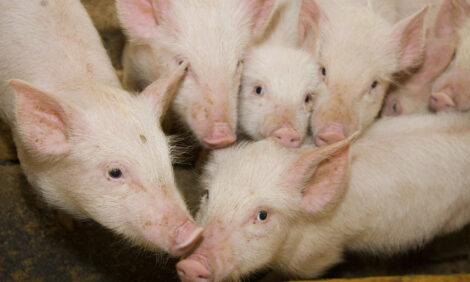BSE Case Accelerates Plans For National Animal Id System
WASHINGTON, D.C. - It doesn't take a rocket scientist to understand that the BSE case in Canada is giving the U.S. livestock industry a real-life drill on the value of a national animal identification system, reports Feedstuffs.
BSE Case Accelerates Plans For National Animal Id System - WASHINGTON, D.C. - It doesn't take a rocket scientist to understand that the BSE case in Canada is giving the U.S. livestock industry a real-life drill on the value of a national animal identification system, reports Feedstuffs.
|
Need a Product or service?
|
|
Canada put a mandatory national program for cattle in place two years ago. It turned out to be a well-timed decision. Even so, tracing animals born before the system's start-up -- such as the cow in Alberta and five suspected herd mates exported to Montana -- has called attention to the value of the new system.
In the U.S., USDA's Animal & Plant Health Inspection Service (APHIS) has called for a steering committee meeting on the issue. In a fluky bit of timing, USDA's meeting invitations went out a few days after confirmation that Canada had a BSE-infected cow. At the upcoming meeting, the new steering committee will review a national identification plan brought forward last year by a livestock industry-wide task force.
On the agenda will be a task force report that has a consensus from the livestock industry. Last fall, a task force sponsored by the National Institute for Animal Agriculture formalized it as the National Identification Work Plan. That task force brought together experts from livestock organizations, animal science societies and state and federal animal health officials to devise the blueprint. The work plan received the key blessing of the U.S. Animal Health Assn. (USAHA) in October.
In drafting their plan for a U.S. livestock identification system, the task force kept its eye on this one issue: "In the event of a foreign animal disease incursion to the U.S., timely trace back of animals is the key to rapid recovery."
Financial viability of the U.S. livestock industry would be at stake, they wrote.
With great clarity, the task force set out one goal: "To establish an animal identification and information system that has the capability to identify all premises that had direct contact with a foreign animal disease (FAD) within 48-hours after discovery."
When an animal disease pathogen -- particularly a foreign animal disease pathogen -- is introduced "we've got to get to the bottom of it real quick," said Bob Frost, a California stockman who is the president of USAHA, the nation's oldest and largest organization of animal health professionals. He allows, however, that liability issues arising from trace back are scary to livestock producers.
Nonetheless, the task force focused on the benefits of disease monitoring, eradication and emergency management with a steely eye. Key elements of their plan include a uniform premises numbering identification system uniform nationwide individual animal numbering system, and a uniform nationally recognized numbering system for a lot or group of animals.
Those criteria would make several existing private livestock ID systems compatible.
If you're wondering how a formal livestock identification system fits with the farm bill's country-of-origin labeling (COOL) requirement, you are not alone.
Some who support animal identification actively oppose COOL. For instance, National Pork Producer Council president Jon Caspers said the identification task force report was "really a direction to move forward, focusing mainly on animal health and food safety." He has led NPPC's opposition to COOL -- in a nutshell believing it will bring burdensome costs and other detriments to the industry.
Caspers, a Swaledale, Iowa, producer, is one of the industry leaders APHIS has invited to serve on the steering committee.
He said he is "actually hopeful that the Canadian BSE crisis will accelerate work on the U.S. plan."
He pointed out the U.S. pig industry currently has had trace back to the place of origin since 1989 with tattoos identifying all hogs sold to slaughter. However, he said, "We would like to upgrade the system." By that, he means NPPC supports clear identification numbers for all producer premises so that no trace back effort would stall because of an address that, for instance, lists only a post office box number.
A bona fide identification system has real value to investigators in a foreign animal disease outbreak, a food safety trace back or in an agroterrorism attack, he said.
COOL, though, is an entirely different issue.
Caspers said he was quite surprised when COOL's proponents seized on the BSE situation to promote COOL as a trace back mechanism. "It is a phenomenally inaccurate statement," he said. "COOL does nothing to trace back. It is basically a retail label."
Source: National Pork Producers Council (NPPC) - 10th June 2003

















